Key West City Cemetery
701 Passover Lane,
Key West, FL
Established 1847
20 acres
Burials 80,000-100,000
website
“A graveyard of buried hopes is as romantic
a thing as one can imagine.”
L.M. Montgomery – Anne of Green Gables
The island of Key West was discovered in 1513 by the Spanish Conquistador Ponce de Leon. While exploring the area the newcomers came across many piles of skulls of the  deceased indigenous inhabitants. Consequently, de Leon named the isle Cayo Hueso or Island of Bones. The first City Cemetery was located in the sand dunes of Whitehead Point near the southernmost point of the Island where the first lighthouse stood. However, a tremendous hurricane hit Key West on October 11, 1846 destroying the burial ground as well as the lighthouse. The devastation was horrific. An eyewitness, Stephen Mallory, the port inspector and an attorney, gave a graphic report of the results of the storm. He said:
deceased indigenous inhabitants. Consequently, de Leon named the isle Cayo Hueso or Island of Bones. The first City Cemetery was located in the sand dunes of Whitehead Point near the southernmost point of the Island where the first lighthouse stood. However, a tremendous hurricane hit Key West on October 11, 1846 destroying the burial ground as well as the lighthouse. The devastation was horrific. An eyewitness, Stephen Mallory, the port inspector and an attorney, gave a graphic report of the results of the storm. He said:
“The effects of the hurricane were terrible. The graveyard of this town on a high sand ridge on the Southern part of the Island was entirely washed away, and the dead were scattered throughout the forest, many of them lodged in trees.”
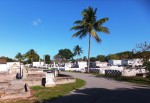 In 1847 city officials purchased a 100-lot tract of land in the center of town for $400 and a new cemetery was dedicated. Over the years additional adjacent parcels were acquired. In 1868 a Catholic section was added followed by a Jewish burial ground within the boundaries of the existing cemetery.
In 1847 city officials purchased a 100-lot tract of land in the center of town for $400 and a new cemetery was dedicated. Over the years additional adjacent parcels were acquired. In 1868 a Catholic section was added followed by a Jewish burial ground within the boundaries of the existing cemetery.
At this time the “rural” or “garden” cemetery movement was becoming very popular in America and city fathers opted for this new style of burial ground. Its signature features include considerable landscaping and park-like features. The English architect, Christopher Wren, was the first to advocate this design. In 1804 the first landscaped cemetery, Pere Lachaise, opened in Paris, France. As an aside, American rock star and member of The Doors, Jim Morrison, is interred there.
 In the cemetery there are a wide variety of interments, monuments and headstones. Many of the tombs are above ground and resemble mini-condominiums. The reason for this has nothing to do with the water table but rather that the island is a coral atoll and digging into it is like excavating in concrete. In addition there are mausoleums, zinc crosses, old iron fences, marble statuary and obelisks to mention a
In the cemetery there are a wide variety of interments, monuments and headstones. Many of the tombs are above ground and resemble mini-condominiums. The reason for this has nothing to do with the water table but rather that the island is a coral atoll and digging into it is like excavating in concrete. In addition there are mausoleums, zinc crosses, old iron fences, marble statuary and obelisks to mention a 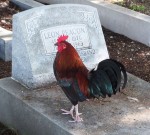 few. Some of the old water pumps that families used to water trees and plants are still visible. And there are plenty of iguanas and Key West’s famous wondering roosters. It is still an active cemetery with about 100 burials annually.
few. Some of the old water pumps that families used to water trees and plants are still visible. And there are plenty of iguanas and Key West’s famous wondering roosters. It is still an active cemetery with about 100 burials annually.
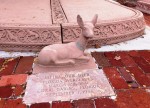 Located in the heart of Old Town Key West, this cemetery is the final resting place of some of the most interesting and quirky individuals we have come across in our historic cemetery research project. Interred here are soldiers, sailors, ship captains, fishing guides, bar owners, circus midgets, revolutionaries, politicians and, believe it or not, a family pet deer among others.
Located in the heart of Old Town Key West, this cemetery is the final resting place of some of the most interesting and quirky individuals we have come across in our historic cemetery research project. Interred here are soldiers, sailors, ship captains, fishing guides, bar owners, circus midgets, revolutionaries, politicians and, believe it or not, a family pet deer among others.
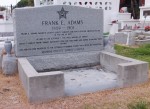 Adams, Frank E. (1859-1901) – Peace Officer – This native Floridian was a Deputy Sheriff for Monroe County (where Key West is located) who was shot and killed while trying to arrest Robert J. Frank for interfering in police matters. Adams was attempting to arrest Frank’s brother when shots were fired. The perpetrator escaped but was arrested the following day and identified as the shooter. Frank was convicted of murder and sentenced to life in prison. Adams was the first Black police officer killed in the line of duty in Florida.
Adams, Frank E. (1859-1901) – Peace Officer – This native Floridian was a Deputy Sheriff for Monroe County (where Key West is located) who was shot and killed while trying to arrest Robert J. Frank for interfering in police matters. Adams was attempting to arrest Frank’s brother when shots were fired. The perpetrator escaped but was arrested the following day and identified as the shooter. Frank was convicted of murder and sentenced to life in prison. Adams was the first Black police officer killed in the line of duty in Florida.
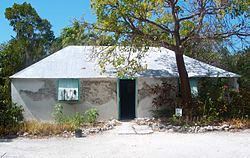 Adderley, George (1870-1959) – Real Estate Developer – Born in the Bahamas, he moved to Marathon, FL. on Knight’s Key and established a small town. Adderley had hoped to convince railroad baron Henry Flagler to make his town (now known as Cranes Point) a flag stop on the Overseas Railway between Miami and Key West. His home, Bahamian House, is on the U. S. National Register of Historic Places.
Adderley, George (1870-1959) – Real Estate Developer – Born in the Bahamas, he moved to Marathon, FL. on Knight’s Key and established a small town. Adderley had hoped to convince railroad baron Henry Flagler to make his town (now known as Cranes Point) a flag stop on the Overseas Railway between Miami and Key West. His home, Bahamian House, is on the U. S. National Register of Historic Places.
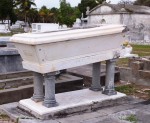 Ayala, Piedad L. F. de (1859-1891) – Fearful of Drowning – This young Cuban immigrant had a phobia about drowning so she insisted her interment be above ground. As a result, her raised marble casket is one of the more unusual monuments in the cemetery. It was carved by George Clark of Jacksonville, FL. who signed it on the base. There is an epitaph in Spanish that roughly translates:
Ayala, Piedad L. F. de (1859-1891) – Fearful of Drowning – This young Cuban immigrant had a phobia about drowning so she insisted her interment be above ground. As a result, her raised marble casket is one of the more unusual monuments in the cemetery. It was carved by George Clark of Jacksonville, FL. who signed it on the base. There is an epitaph in Spanish that roughly translates:
“Piedad lies here, sad and suffering
Belita cried her fleeting ecstasy
In love and shone her precious face
And in her soul the virtue
Rest in peace”
Interesting note: Ayala’s grandmother wrote the Cuban National Anthem, El Himno de Bayamo, in 1868.
 Bartlum, John (1814-1871) – Master Shipbuilder – Born in the Bahamas he immigrated to Key West in 1832 when he was 18 years old. He was joined by his friend Richard T. “Tuggy” Roberts (1818-1888) – Ship Captain. Both disassembled their Bahamian homes in Green Turtle Cay in 1847, transported them to Key West and rebuilt them on side-by-side lots. Bartlum’s home is a B & B today. In 1856 he built the clipper ship Stephen R. Mallory for the U. S. Navy. That vessel saw action on the Union side during the War Between the States.
Bartlum, John (1814-1871) – Master Shipbuilder – Born in the Bahamas he immigrated to Key West in 1832 when he was 18 years old. He was joined by his friend Richard T. “Tuggy” Roberts (1818-1888) – Ship Captain. Both disassembled their Bahamian homes in Green Turtle Cay in 1847, transported them to Key West and rebuilt them on side-by-side lots. Bartlum’s home is a B & B today. In 1856 he built the clipper ship Stephen R. Mallory for the U. S. Navy. That vessel saw action on the Union side during the War Between the States.
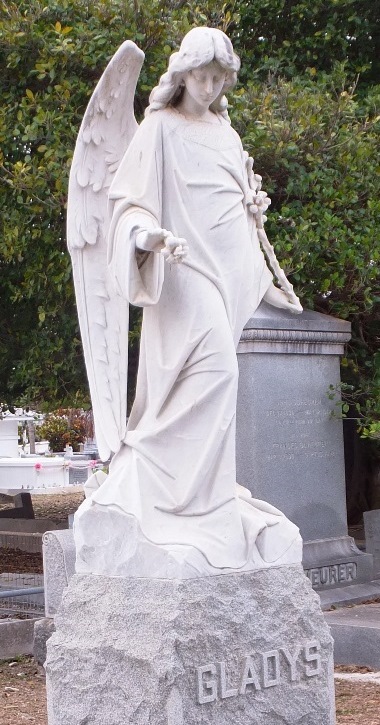 Bates, Gladys (?-?) – Young Woman – The most impressive life size angel monument in the cemetery belongs to this teenager who died during an epidemic that struck Key West. There are no carvings on her stone so we know nothing else about her.
Bates, Gladys (?-?) – Young Woman – The most impressive life size angel monument in the cemetery belongs to this teenager who died during an epidemic that struck Key West. There are no carvings on her stone so we know nothing else about her.
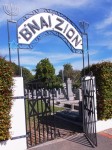 B’nai Zion Cemetery (Founded 1887) – Within the boundaries of Key West Cemetery is this separate Jewish section. The date of the first Jewish settler’s arrival on the island is unknown. However, it is certain that Jews lived here as early as 1832. Most of them came from Europe seeking a better life or, believe it or not, were shipwrecked here. In Key West anti-Semitism was not an issue. Congregation B’nai Zion was founded in 1887. The synagogue is located just a few blocks from the cemetery.
B’nai Zion Cemetery (Founded 1887) – Within the boundaries of Key West Cemetery is this separate Jewish section. The date of the first Jewish settler’s arrival on the island is unknown. However, it is certain that Jews lived here as early as 1832. Most of them came from Europe seeking a better life or, believe it or not, were shipwrecked here. In Key West anti-Semitism was not an issue. Congregation B’nai Zion was founded in 1887. The synagogue is located just a few blocks from the cemetery.
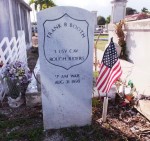 Booth, Frank B. (1875-1898) – Roosevelt Rough Rider – At the start of the Spanish-American War (1898), a conflict with Spain fought in Cuba; the U. S. raised three volunteer brigades to fight the Spaniards. Only one, the 1st United States Volunteer Cavalry, saw action and this was the troop Booth joined. He served as a private in Company F. The cavalrymen were named Rough Riders by their leader Colonel Theodore Roosevelt. The future president took the name from his friend William “Buffalo Bill” Cody’s “Buffalo Bill’s Wild West and Congress of Rough Riders of the World.” Private Booth was wounded in action and died of complications while being treated in the Key West hospital.
Booth, Frank B. (1875-1898) – Roosevelt Rough Rider – At the start of the Spanish-American War (1898), a conflict with Spain fought in Cuba; the U. S. raised three volunteer brigades to fight the Spaniards. Only one, the 1st United States Volunteer Cavalry, saw action and this was the troop Booth joined. He served as a private in Company F. The cavalrymen were named Rough Riders by their leader Colonel Theodore Roosevelt. The future president took the name from his friend William “Buffalo Bill” Cody’s “Buffalo Bill’s Wild West and Congress of Rough Riders of the World.” Private Booth was wounded in action and died of complications while being treated in the Key West hospital.
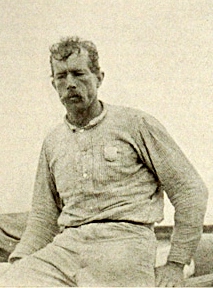 Bradley, Guy (1870-1905) – Game Warden & Deputy Sheriff – He was born in Chicago but came to Florida as a boy. As a young man Bradley served as a fishing guide and bird plume hunter. In the late-1800s and early-1900s huge numbers of birds were killed to satisfy the millinery trade’s passion for feathers for women’s hats. This fashion craze resulted in over five million birds being killed in 1886 alone. Many species were facing extinction. Bradley denounced plume poaching and supported legislation to protect many species of birds. The American Ornithologist’s Union hired him as one of America’s first game wardens. Bradley’s territory ranged from west Florida to the Everglades and Key West. In 1905 he came upon three known poachers, Walter Smith and Smith’s two sons, with whom he’d had a previous altercation. An argument ensued. Smith gunned down Bradley. The perpetrator was charged with murder but found not guilty for insufficient evidence. Bradley’s death resulted in the formation of the Everglades National Park in 1947. (See Hall, Part 2.)
Bradley, Guy (1870-1905) – Game Warden & Deputy Sheriff – He was born in Chicago but came to Florida as a boy. As a young man Bradley served as a fishing guide and bird plume hunter. In the late-1800s and early-1900s huge numbers of birds were killed to satisfy the millinery trade’s passion for feathers for women’s hats. This fashion craze resulted in over five million birds being killed in 1886 alone. Many species were facing extinction. Bradley denounced plume poaching and supported legislation to protect many species of birds. The American Ornithologist’s Union hired him as one of America’s first game wardens. Bradley’s territory ranged from west Florida to the Everglades and Key West. In 1905 he came upon three known poachers, Walter Smith and Smith’s two sons, with whom he’d had a previous altercation. An argument ensued. Smith gunned down Bradley. The perpetrator was charged with murder but found not guilty for insufficient evidence. Bradley’s death resulted in the formation of the Everglades National Park in 1947. (See Hall, Part 2.)
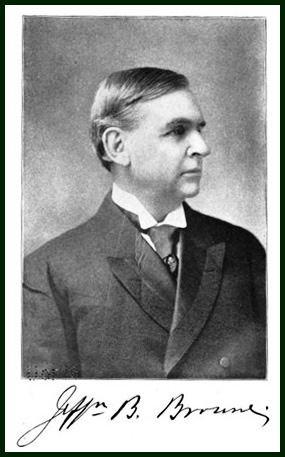 Browne, Jefferson Beale (1857-1937) – Jack of All Trades – Born in Key West, he had numerous occupations during his life. Among them were: lighthouse keeper, county surveyor, postmaster, port collector, lawyer, president of the Florida State Senate, Chief Justice of the Florida Supreme Court (1893-7) and author of Key West: The Old and the New. (See Browne, Joseph.)
Browne, Jefferson Beale (1857-1937) – Jack of All Trades – Born in Key West, he had numerous occupations during his life. Among them were: lighthouse keeper, county surveyor, postmaster, port collector, lawyer, president of the Florida State Senate, Chief Justice of the Florida Supreme Court (1893-7) and author of Key West: The Old and the New. (See Browne, Joseph.)
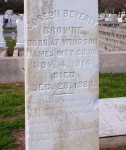 Browne, Joseph Beverly (1814-1888) – Another Jack of All Trades – He was born in Virginia and came to Florida at age 16. Like his son Jefferson, Joseph also excelled at numerous occupations. He was a marshal, postmaster, mayor of Key West and a Florida State Legislator. Among his close friends was Jefferson Davis, President of the Confederate States of America. (See Browne, Jefferson.)
Browne, Joseph Beverly (1814-1888) – Another Jack of All Trades – He was born in Virginia and came to Florida at age 16. Like his son Jefferson, Joseph also excelled at numerous occupations. He was a marshal, postmaster, mayor of Key West and a Florida State Legislator. Among his close friends was Jefferson Davis, President of the Confederate States of America. (See Browne, Jefferson.)
 Cabeza, Manuel “El Isleno” (1887-1921) – Bar Owner – This Key West native known by his nickname “El Isleno” or the Islander owned a club called the Red Rooster. Cabeza began secretly dating a mulatto woman. The couple eventually moved in together. This relationship did not sit well with the local Klu Klux Klan and on the evening of December 21, 1921 a gang of Klansmen broke into the couple’s house. A fight ensued. Cabeza was known as a tough guy but the odds were against him. He was beaten, tied up, hauled out of the house and tarred and feathered. During the struggle Cabeza managed to tear the hood off one of his attackers and recognized him as William Decker, the manager of a Key West cigar factory. On Christmas Eve he went looking for Decker, found him in the Cuban Club and shot and killed him. He escaped but later surrendered to a U. S. Marshall whom he trusted. U. S. Marines were called to the jail to protect Cabeza. However, at midnight Sheriff Roland Curry relieved the soldiers of their duty. Within an hour of the Marines departure five carloads of Klansmen arrived, overpowered the Sheriff and hauled Cabeza off. He was taken to a remote place on the island, hanged from a tree and his body was riddled with bullets. Amazingly enough no one was charged. A local official said “There were never any suspects. There were never any arrests.”
Cabeza, Manuel “El Isleno” (1887-1921) – Bar Owner – This Key West native known by his nickname “El Isleno” or the Islander owned a club called the Red Rooster. Cabeza began secretly dating a mulatto woman. The couple eventually moved in together. This relationship did not sit well with the local Klu Klux Klan and on the evening of December 21, 1921 a gang of Klansmen broke into the couple’s house. A fight ensued. Cabeza was known as a tough guy but the odds were against him. He was beaten, tied up, hauled out of the house and tarred and feathered. During the struggle Cabeza managed to tear the hood off one of his attackers and recognized him as William Decker, the manager of a Key West cigar factory. On Christmas Eve he went looking for Decker, found him in the Cuban Club and shot and killed him. He escaped but later surrendered to a U. S. Marshall whom he trusted. U. S. Marines were called to the jail to protect Cabeza. However, at midnight Sheriff Roland Curry relieved the soldiers of their duty. Within an hour of the Marines departure five carloads of Klansmen arrived, overpowered the Sheriff and hauled Cabeza off. He was taken to a remote place on the island, hanged from a tree and his body was riddled with bullets. Amazingly enough no one was charged. A local official said “There were never any suspects. There were never any arrests.”
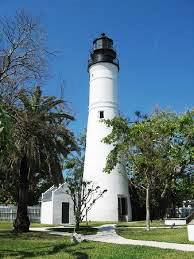 Cameron, Duncan (1810-1855) – Builder – This Scot, from Doune, immigrated to Key West in the early 1800s. Cameron is remembered as the construction supervisor of the 1847 lighthouse. It took about a year to build. When completed the new tower was 50 feet tall, had 13 lamps and a Fresnel lens. It was decommissioned in 1969 and is now the Key West Lighthouse and Keeper’s Quarters Museum. It is said that he was laid to rest among a hedge of purple bougainvillea.
Cameron, Duncan (1810-1855) – Builder – This Scot, from Doune, immigrated to Key West in the early 1800s. Cameron is remembered as the construction supervisor of the 1847 lighthouse. It took about a year to build. When completed the new tower was 50 feet tall, had 13 lamps and a Fresnel lens. It was decommissioned in 1969 and is now the Key West Lighthouse and Keeper’s Quarters Museum. It is said that he was laid to rest among a hedge of purple bougainvillea.
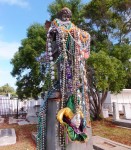 Captain Outrageous aka Norm Taylor (1940- 2007) – Folk Artist – He was a character among an island full of characters. The Captain fled the financial world sometime in the mid-1970s. It wasn’t long before he began painting everything in sight: motorbikes, recreational vehicles, automobiles, vans, trailers, mobile homes, musical instruments, furniture, telephones and bikes to mention just a few. He opened a hamburger join, The Last Straw. Locals say the food was wretched but they loved the art work. It eventually closed. In the 1990s the Captain opened an art gallery that proved successful. Following his demise his widow, Lady Outrageous, had the Captain cremated and gave his ashes to friends in small, hand painted salt shakes. His last words were reported as “Life’s journey is not to arrive at the grave in a well-preserved body but rather to skid in sideways, totally worn out, shouting ‘HOLY S..T WHAT A RIDE!’” Outrageous’ grave marker is covered in Mardi Gras beads.
Captain Outrageous aka Norm Taylor (1940- 2007) – Folk Artist – He was a character among an island full of characters. The Captain fled the financial world sometime in the mid-1970s. It wasn’t long before he began painting everything in sight: motorbikes, recreational vehicles, automobiles, vans, trailers, mobile homes, musical instruments, furniture, telephones and bikes to mention just a few. He opened a hamburger join, The Last Straw. Locals say the food was wretched but they loved the art work. It eventually closed. In the 1990s the Captain opened an art gallery that proved successful. Following his demise his widow, Lady Outrageous, had the Captain cremated and gave his ashes to friends in small, hand painted salt shakes. His last words were reported as “Life’s journey is not to arrive at the grave in a well-preserved body but rather to skid in sideways, totally worn out, shouting ‘HOLY S..T WHAT A RIDE!’” Outrageous’ grave marker is covered in Mardi Gras beads.
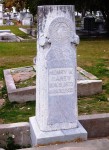 Henry W. Carey (1877-1933) – Woodmen of the World – All we know about Carey is that he was a member of Woodmen of the World. If you are interested in learning about this organization please visit this link on our website.
Henry W. Carey (1877-1933) – Woodmen of the World – All we know about Carey is that he was a member of Woodmen of the World. If you are interested in learning about this organization please visit this link on our website.
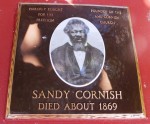 Cornish, Sandy (1793 ca.- 1869) – Freed Slave & Minister – He was born a slave in Maryland and eventually ended up in Florida with his wife Lillah. Cornish worked on the construction of a railroad at Port Leon, FL for nine years, earning $600 with which he purchased freedom for himself and Lillah. Unfortunately a house fire broke out in Port Leon and burned his freedom papers, his only proof that he was a free man. This resulted in him being seized by slave traders who wanted to take him to the slave market in New Orleans. Cornish managed to escape. The following day Lillah pushed him in a wheelbarrow to the docks where he pulled out a knife and hatchet and commenced to cut his Achilles tendons, slash a 10-inch gash in his leg and cut off a finger thus rendering him unable to work as a slave again. In 1850 they moved to Key West, purchased 20 acres of land and started an orchard. Cornish is buried in an unknown grave, however the Historic Florida Keys Foundation dedicated a memorial plaque in his honor.
Cornish, Sandy (1793 ca.- 1869) – Freed Slave & Minister – He was born a slave in Maryland and eventually ended up in Florida with his wife Lillah. Cornish worked on the construction of a railroad at Port Leon, FL for nine years, earning $600 with which he purchased freedom for himself and Lillah. Unfortunately a house fire broke out in Port Leon and burned his freedom papers, his only proof that he was a free man. This resulted in him being seized by slave traders who wanted to take him to the slave market in New Orleans. Cornish managed to escape. The following day Lillah pushed him in a wheelbarrow to the docks where he pulled out a knife and hatchet and commenced to cut his Achilles tendons, slash a 10-inch gash in his leg and cut off a finger thus rendering him unable to work as a slave again. In 1850 they moved to Key West, purchased 20 acres of land and started an orchard. Cornish is buried in an unknown grave, however the Historic Florida Keys Foundation dedicated a memorial plaque in his honor.
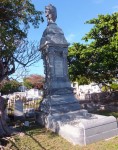 Curry, William (1821-1896) – Maritime Salvager – A native Bahamian, he immigrated to Key West in 1837. Curry worked as a clerk in a mercantile business then a quartermaster and fought in the Seminole War (1835-42.) He returned to the mercantile business but soon became involved in marine salvage and operated both businesses for more than 30 years.
Curry, William (1821-1896) – Maritime Salvager – A native Bahamian, he immigrated to Key West in 1837. Curry worked as a clerk in a mercantile business then a quartermaster and fought in the Seminole War (1835-42.) He returned to the mercantile business but soon became involved in marine salvage and operated both businesses for more than 30 years.
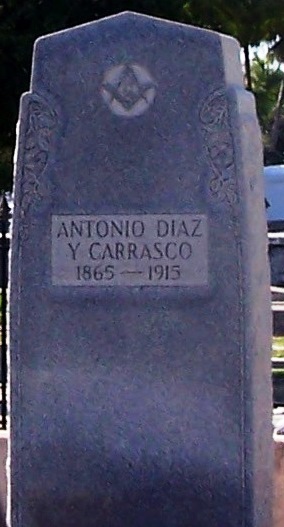 Diaz y Carrasco, Antonio (1865-1915) – Cuban Consul – He was born in Havana, Cuba but moved with his family to Key West at the age of five. As an adult Diaz y Carrasco took a job as a teacher at San Carlos School, the first public school on the island. He was aware of the attempt to free Cuba from Spain, an unsuccessful war that lasted from 1868 until 1878. He participated in the subsequent uprising in 1895 and resulted in Cuba’s freedom three years later. Diaz y Carrasco was appointed Consul to Cuba in 1903, a position he held until his death in 1915. He is buried in the Los Martires de Cuba memorial. (See Los Martires de Cuba, Part 2.)
Diaz y Carrasco, Antonio (1865-1915) – Cuban Consul – He was born in Havana, Cuba but moved with his family to Key West at the age of five. As an adult Diaz y Carrasco took a job as a teacher at San Carlos School, the first public school on the island. He was aware of the attempt to free Cuba from Spain, an unsuccessful war that lasted from 1868 until 1878. He participated in the subsequent uprising in 1895 and resulted in Cuba’s freedom three years later. Diaz y Carrasco was appointed Consul to Cuba in 1903, a position he held until his death in 1915. He is buried in the Los Martires de Cuba memorial. (See Los Martires de Cuba, Part 2.)
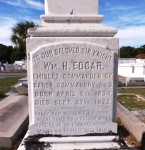 Edgar, William H. (1834-1875) – Mason – Little is known about this gentleman except he was the commander of Baron Commandery No. 3 of the Knights Templar of the Scottish Rite. He has an interesting epitaph on his tombstone. It reads:
Edgar, William H. (1834-1875) – Mason – Little is known about this gentleman except he was the commander of Baron Commandery No. 3 of the Knights Templar of the Scottish Rite. He has an interesting epitaph on his tombstone. It reads:
Sadly now we lay his form
In the tomb to moulder still
Hoping in the eternal morn
Christ his promise will fulfill
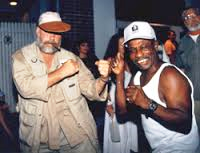 Forbes, Kermit “Shine” (1914-2000) – Boxer – For a number of years he was a sparring partner of Ernest Hemmingway. Forbes remained a popular fellow with the many Hemmingway look alikes who gather annually in Key West. He served in the U.S. Army during World War II and was known on the island as “one hell of a man.”
Forbes, Kermit “Shine” (1914-2000) – Boxer – For a number of years he was a sparring partner of Ernest Hemmingway. Forbes remained a popular fellow with the many Hemmingway look alikes who gather annually in Key West. He served in the U.S. Army during World War II and was known on the island as “one hell of a man.”
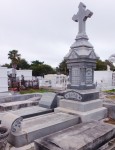 Gato, Mercedes H. (1846-1903) – Cigar Manufacturing Heiress – Her father was E.H. Gato, owner of the E. H. Gato Cigar Factory. The company was founded in 1871 and operated in a three story building. The first floor was for receiving tobacco and distribution of cigars. On the second floor were benches and tables where cigars were rolled. There was a raised lectern for a reader who was paid by the employees to read books, poetry and newspapers. (We witnessed this on our visit to a cigar factory in Havana a few years ago except the reader cited Communist propaganda.) Workers were paid based on how many cigars they rolled. A first class roller could produce as many as 300 cigars a day. In 1894 the factory employed 500 people who produced about 70,000 cigars per day. The third floor was where tobacco was stored and sorted. Gato cared very much for his workers and built 40 cottages around the factory for them to live in, built the first streetcar system, erected a hospital and started a baseball league for them. When Mercedes died, her home became a charity hospital at her request.
Gato, Mercedes H. (1846-1903) – Cigar Manufacturing Heiress – Her father was E.H. Gato, owner of the E. H. Gato Cigar Factory. The company was founded in 1871 and operated in a three story building. The first floor was for receiving tobacco and distribution of cigars. On the second floor were benches and tables where cigars were rolled. There was a raised lectern for a reader who was paid by the employees to read books, poetry and newspapers. (We witnessed this on our visit to a cigar factory in Havana a few years ago except the reader cited Communist propaganda.) Workers were paid based on how many cigars they rolled. A first class roller could produce as many as 300 cigars a day. In 1894 the factory employed 500 people who produced about 70,000 cigars per day. The third floor was where tobacco was stored and sorted. Gato cared very much for his workers and built 40 cottages around the factory for them to live in, built the first streetcar system, erected a hospital and started a baseball league for them. When Mercedes died, her home became a charity hospital at her request.



Pingback: City Cemetery & an African Cemetery in Key West Florida | Historic Houston: